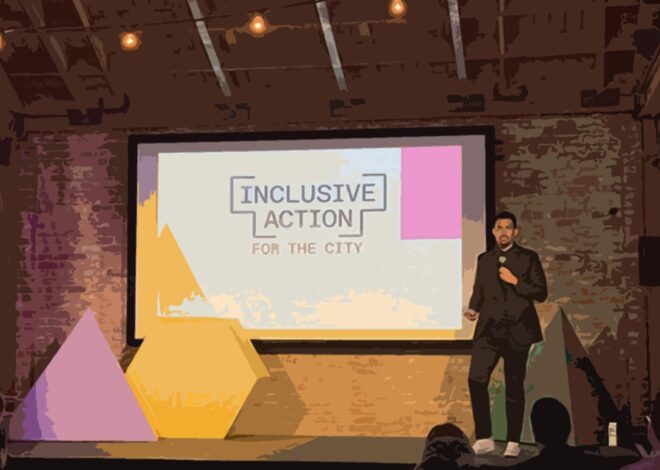Blue Avocado: What it Takes to Run a Nonprofit
Leann Malone, Executive Director of Lancaster County First Steps, on strong business acumen, retaining qualified staff, and the bottom line.

“If you’re serious about it, working in nonprofits is not a job or a career — it is a calling.”
Leann Malone, the Executive Director of Lancaster County First Steps, talks to Blue Avocado about strong business acumen, retaining qualified staff, and keeping the eye on the bottom line.
BA: What advice do you have for a young person considering working in the nonprofit sector?
LM: If you’re serious about it, working in nonprofits is not a job or a career—it is a calling.
As we’ve all learned over the past 18 months, events completely out of our control can take away things we depend upon. You can lose a job, you can change your career, but a true calling is something deep in your core that can’t be taken away.
Whatever your passion—animals, the environment, teaching, the arts, community service—no one and nothing can take that away from you.
Not everyone who works in nonprofit has a calling. Some really good and decent folks find a place where their skills and personality are a good fit and the pay meets their current needs. That’s a job.
If they’re lucky or diligent or committed and stay with it long enough, it can become a career. But they aren’t (and often don’t want or need to be) passionate about what they do for a living. Most likely, those of us who have a calling will never be truly happy in that scenario.
We have to know we are making a real difference in the world somehow. Most of us will never get rich or famous working in nonprofit, and we could probably make a lot more money working in the corporate sector. But that doesn’t really matter to us in the end. So if you have a calling (or even if you just want to figure out if you do), I encourage you to give nonprofit a try.
If it’s not for you, that’s okay. I believe it’s much better to figure out early on what we don’t want so we can move on and find what we do want.
BA: What’s a myth you would debunk about nonprofits?
LM: MYTH: In a nonprofit, you don’t have to worry about profit and loss, or return on investment, or strong business practices. Everyone will be happy to work here, so we don’t have to pay competitive salaries, and people will give to us just because we’re good people. Kumbaya.
REALITY: Nonprofit is a tax designation, not a business model. It simply means that all surplus funding (i.e., the money you have left at the end of the year) goes back into the business rather than being distributed to stockholders or investors or private owners.
The level of financial and business acumen needed to run a strong nonprofit well is actually pretty high. Government and private foundations often have tough restrictions on how and when their money can be used, and that can get pretty complicated if your nonprofit has more than a few grants to manage.
If a nonprofit isn’t run with an eye on the bottom line, it won’t last. You have to monitor key performance indicators, spending, revenue, employee satisfaction, client satisfaction, and donor and volunteer satisfaction.
You can’t make major decisions about programs or facilities or operations without input and (sometimes) consent or approval from your board.
BA: What do you think board members should know that you feel you can’t tell them?
LM: If you aren’t going to engage and be an active contributor to the organization, please resign so that we can find someone else who will.
Far too many boards have members who are there because they’re friends of someone or simply because they want their name on as many board rosters as possible for their personal resume. It is unbelievably demoralizing for staff to work hard on a program or an event only to have the same three or four board members show up.
And it’s even tougher for a CEO or a development director to have to chase board members for their annual contribution (editor note: if that is a condition of board service).
BA: What’s the most important thing you’ve learned from working at a nonprofit?
LM: There are three things.
- There will always be more to do than there are hours in the day to do it. Go home.
- Take care of yourself, or you won’t be able to help others.
- Don’t place your organization’s mission above the important people and relationships in your life. The need that drives the mission will likely be there long after you are gone, and you can rarely recapture the special times you missed with family and friends once they’re gone.
BA: What are your biggest challenges as a nonprofit leader?
LM: Attracting and retaining talented, qualified staff is probably my toughest challenge. By its nature, nonprofit is ripe for staff burnout at all levels. It’s hard work, the hours can be very long, the pay is not what it should be for the skill levels and dedication required, and the need can seem never-ending. Hiring a great team member can feel like hitting the lottery.
Unfortunately, many foundations won’t fund salaries and insist on providing funds only for direct program expenses. After 20 years, this still baffles me since most programs can’t be delivered without staff. It’s improving, but we still have a long way to go. So, we have to find other ways to reward great performance in addition to giving raises when we can.
Whether it’s additional vacation time, a periodic sabbatical, public recognition, team retreats, or continuing education, you have to find what works for your staff, budget, and organizational culture.
BA: How has the nonprofit sector changed—for better or worse—in the past 10 years?
LM: I’m not sure I would qualify the changes we’ve seen as one or the other. It’s been a combination, and my experience is fairly limited to the southeastern U.S.
On one hand, I see nonprofits becoming much more sophisticated—using solid business operating concepts and learning to adapt their message in very specific ways for specific audiences.
What I mean by that is, when you’re speaking to a chamber of commerce or business group, chances are your message will be better received if you talk about your organization’s impact in terms of economic development or reduced crime rates or whatever the most relevant factors are for them.
On the other hand, there still is not enough collaboration. In fact, it sometimes feels as if we are becoming more competitive and siloed. In the youth education sector, for example, collaborations among nonprofits that serve children “from cradle to career” are somewhat nascent. In this respect, institutional funders are waiting on us.
Many would rather fund one big program that leverages the competencies and capabilities of five nonprofits than five small independent programs that compete for clients and miss out on the arc of potential impact.
BA: What could the for-profit sector learn from nonprofits?
LM: Empathy and compassion are not something you trot out during the annual employee volunteer week and then pack up until next year, and those qualities don’t negatively impact the bottom line.
I believe many companies in the for-profit sector, particularly larger, publicly held companies, are afraid that putting these concepts front and center of their values and ingraining them in the company’s culture would make them seem weak somehow.
I don’t think you would ever get a Fortune 500 CEO to say that in public—that’s not good press.
BA: What are nonprofit leaders missing or overlooking that disempowers their employees?
LM: We (and I include myself in that) need to always view change as opportunity. For example, the pandemic has fundamentally changed the way people think about work—how they do it, where they do it, and when they do it. It also has changed what they will and will not do for their job.
For those of us whose professional lives began when working from home was completely dismissed as an option (even after technology made it possible), the message we got was, If I can’t see you, how do I know you’re working?
Right or wrong, that translates to I don’t trust you to be a professional and do your job, and that way of thinking was passed on to many of us.
Instead, why don’t we look at work from home as an opportunity to reduce our overhead costs? There may be initial expenses, such as investing in technology and infrastructure to make sure your organization and team can function fully from wherever they are, and totally remote certainly won’t work for every organization.
But even if it makes it possible to give more staff the opportunity to occasionally enjoy a pajama day at the office without feeling guilty, isn’t that a good thing?
BA: Why do you read Blue Avocado?
LM: For the content. I frequently find resources that keep me from reinventing the wheel. But I also find thought-provoking discussions that give me more to chew on. I’ve started to share things I’ve learned with my board chair and Executive Committee as prompts for deeper discussions.
This isn’t something that’s been done in the past (before me), so we’re taking baby steps as we stretch comfort zones and build trust.
About the Author
Leann Malone is the Executive Director of Lancaster County First Steps in South Carolina. It is the only dedicated and comprehensive early childhood nonprofit in Lancaster County focused solely on getting children from birth to age 5 ready for school and life success. The organization served nearly 4,000 children across the county last year, providing programs and services that improved children's health, strengthened families, expanded access to quality childcare, supported literacy, increased participation in 4K programs, and helped rising kindergartners transition into school. Learn more at www.lancastercountyfirststeps.org.
Articles on Blue Avocado do not provide legal representation or legal advice and should not be used as a substitute for advice or legal counsel. Blue Avocado provides space for the nonprofit sector to express new ideas. Views represented in Blue Avocado do not necessarily express the opinion of the publication or its publisher.












Bullshit! The executive gets all of the money and the employees get a pittance. They pay no Federal tax and have limited supervision. There is little legislation about how much donated money goes to the mission. So I feel most directors are self serving.
Thank you for this point of view. Running a nonprofit is very challenging and you brought up many points that I experienced and agree with. Nonprofit work is not for everyone. A great leader takes care of the staff, the clients while balancing the budget with the mission.